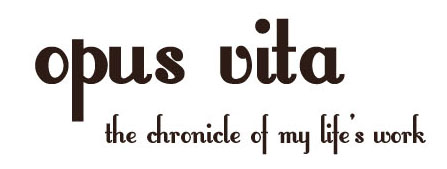When someone floated the idea of going to a pumpkin patch a few years ago, my internal response was something like "why would I want to do that?!" This kinda prissy, allergy-beleaguered mama had no interest in tromping around in a probably wet, muddy field sniffing pumpkins and mingling with livestock at a petting zoo. No thanks.
We went anyway. And it was so fun. We go every year now. The lads love climbing all over the stacks of pumpkins and examining each variety for its idiosyncrasies. The elder lad -- to all our surprise -- likes to take his grandfather through the dimly-lit maze as many times as possible. There are rabbits to feed, horses to ride, guinea hens to laugh at, and a veritable cornucopia of pumpkins, squash, and gourds, among them cucerbits, a word so cute when pronounced by a toddler.
Of course I try to find books to accompany most any of our present day circumstances, and this topic is no exception. There are lots and lots of books of a pumpkin nature out there, some of which are much better than others based on my own subjective scale.
While it may be too late to request these books at the library in time for Halloween, here are some of our favorite books about pumpkins ...
Rollicking, rhyming The Runaway Pumpkin by Kevin Lewis, illustrated by S.D. Schindler, is my default pumpkin book. Two boys and their sister (I can't help grafting my lads and 21-month-old lass onto these characters) discover an enormous pumpkin. In spite of their sister's warning to leave it alone, they cut it loose from its vine, which sets off a series of comedically catastrophic (but ultimately tasty) events for the family members in the pumpkin's path. (No children or pumpkins are hurt in the course of this book.) Kevin Lewis authored a few other favorites of ours, including My Truck is Stuck!, Chugga Chugga Choo Choo, and The Lot at The End of My Block.
When a man's favorite field goes up for sale, he sells nearly everything he has in order to buy and preserve it from development in Pumpkins: A Story for A Field by Mary Lyn Ray, illustrated by Barry Root. He buys a packet of pumpkin seeds, plants them, and lets nature take its course. At harvest time, he utilizes several modes of transportation (including a flying carpet) to ship the pumpkins worldwide and share with those unfamiliar with pumpkins some fun ideas for how to use the orange beauties. Devoted to keeping the field free of "improvements", his pumpkin-aided mission has an obvious environmental message, but also one about greed (or lack thereof). When it's time to plant pumpkins again and anticipate another handsome profit, the man instead gives the seeds away, in the hope that another field someplace else might benefit from the same care given by a similarly-minded person.
The Very Best Pumpkin, written by Marc Kimball Moulton, is a very sweet story. Peter lives on a farm with his Mimi and Papa (which is what our bambini call my parents, by the way). They grow strawberries, corn, and pumpkins. Peter notices a vine trailing off on its own, and takes special care of the pumpkin at its end. When the family opens their pumpkin patch up to visitors, he helps lots of pumpkins find the right homes, but he saves his special pumpkin. One day a girl arrives with her family to pick a pumpkin. They happen to be the new neighbors to Peter and his grandparents, having moved in over the summer. The girl had spent the summer by herself reading and watching Peter tending the special pumpkin. She thinks he didn't notice her, but he did, and he gives the pumpkin to her. This is the beginning of a beautiful friendship. Karen Hillard Good's illustrations are simply charming, reminiscent of American artist Mary Englebreit, but not quite as bright.
Margaret McNamara's How Many Seeds in a Pumpkin? is a fun way to introduce or reinforce the mathematical concept of estimation (not one of my sharper skills). The smallest boy in class is always last in line because his teacher lines them up tallest to smallest. When the teacher gives the class an assignment to estimate the number of seeds in three pumpkins, one small, one medium, and one large, the lad is happily surprised at the results. Illustrations are by G. Brian Karas, whose work appears in other favorites of ours including On Earth, Atlantic, The Class Artist, The Village Garage (all of which he wrote and illustrated), My Crayons Talk written by Patricia Hubbard, and Oh No, Gotta Go!, one of several bilingual books written by Susan Middleton Elya.
We've yet to make our annual trip to the pumpkin patch, but there's still time. And these books (even Runaway Pumpkin) don't have to be put away after Halloween. In fact, the less Halloween-y the pumpkin books, the better in my mind. I'm not such a fan of the "holiday". Were it not my beloved's dear and lovely grandmother's birthday, I might just opt to skip the observance all together (killjoy that I am). The family parlays the Halloween festivities into birthday celebrations for her, which has been a lot of fun. The bambini are cooking up some creative and appropriate costumes for her 80th birthday this year.
With these books in our stash, this time of year is festive and fun for us and our little pun'kins.
chocolate granola
12 years ago





No comments:
Post a Comment